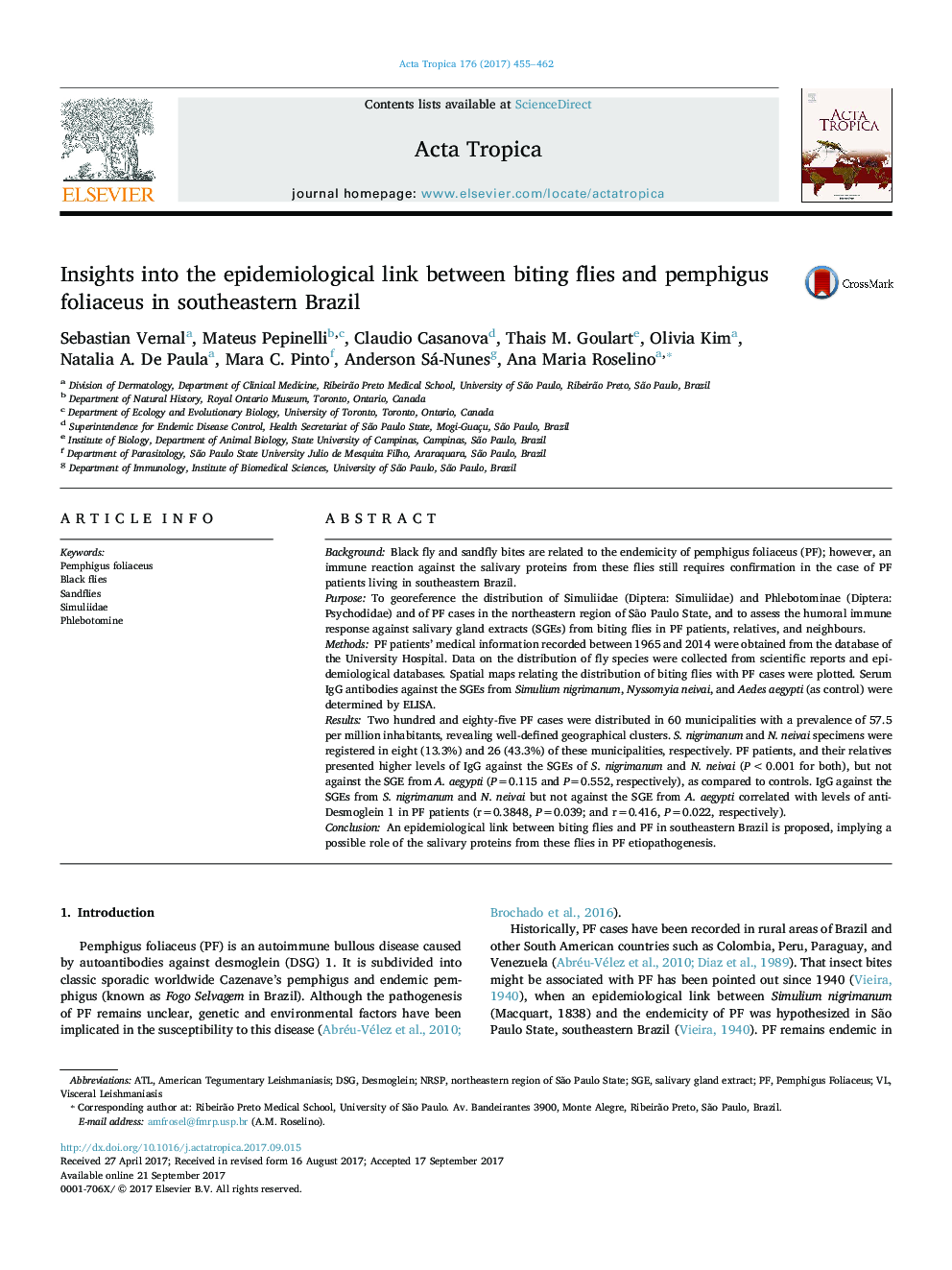| Article ID | Journal | Published Year | Pages | File Type |
|---|---|---|---|---|
| 5671057 | Acta Tropica | 2017 | 8 Pages |
â¢Biting flies and Pemphigus Foliaceus (PF) showed coincidental spatial distribution.â¢The exposure of PF patients to salivary proteins from biting flies was confirmed.â¢Anti-flies' salivary proteins correlated with anti-Desmoglein 1 in PF patients.â¢A link between S. nigrimanum and N. neivai bites, and PF pathogenesis is proposed.
BackgroundBlack fly and sandfly bites are related to the endemicity of pemphigus foliaceus (PF); however, an immune reaction against the salivary proteins from these flies still requires confirmation in the case of PF patients living in southeastern Brazil.PurposeTo georeference the distribution of Simuliidae (Diptera: Simuliidae) and Phlebotominae (Diptera: Psychodidae) and of PF cases in the northeastern region of São Paulo State, and to assess the humoral immune response against salivary gland extracts (SGEs) from biting flies in PF patients, relatives, and neighbours.MethodsPF patients' medical information recorded between 1965 and 2014 were obtained from the database of the University Hospital. Data on the distribution of fly species were collected from scientific reports and epidemiological databases. Spatial maps relating the distribution of biting flies with PF cases were plotted. Serum IgG antibodies against the SGEs from Simulium nigrimanum, Nyssomyia neivai, and Aedes aegypti (as control) were determined by ELISA.ResultsTwo hundred and eighty-five PF cases were distributed in 60 municipalities with a prevalence of 57.5 per million inhabitants, revealing well-defined geographical clusters. S. nigrimanum and N. neivai specimens were registered in eight (13.3%) and 26 (43.3%) of these municipalities, respectively. PF patients, and their relatives presented higher levels of IgG against the SGEs of S. nigrimanum and N. neivai (P<0.001 for both), but not against the SGE from A. aegypti (P=0.115 and P=0.552, respectively), as compared to controls. IgG against the SGEs from S. nigrimanum and N. neivai but not against the SGE from A. aegypti correlated with levels of anti-Desmoglein 1 in PF patients (r=0.3848, P=0.039; and r=0.416, P=0.022, respectively).ConclusionAn epidemiological link between biting flies and PF in southeastern Brazil is proposed, implying a possible role of the salivary proteins from these flies in PF etiopathogenesis.
Graphical abstractDownload high-res image (75KB)Download full-size image
